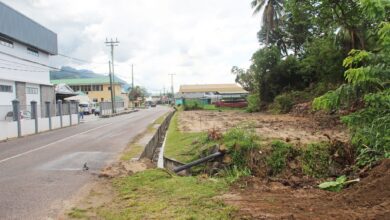La Digue Lifts the Lid (Just Slightly) on New Tourism—With a Strategy This Time

La Digue is opening back up for business—but this time, it’s doing so with its foot on the brakes. The Cabinet has officially approved the Strategic Accommodation Establishment Development Plan for La Digue (2025–2030), ending the island’s three-year moratorium on new tourism establishments. But don’t expect a free-for-all. This is “growth with a conscience.”
Announced at a high-level press conference led by Minister for Tourism Sylvestre Radegonde, Principal Secretary Sherin Francis, and Director General Paul Lebon, the plan marks a bold new chapter in La Digue’s tourism journey—one that promises to preserve its charm while allowing for carefully controlled expansion.
“We are not lifting the moratorium to open the floodgates,” said Minister Radegonde. “We are introducing a strategy that respects the carrying capacity of La Digue and puts sustainability at the heart of development.”
The original moratorium, imposed in 2021, was a response to growing concern that La Digue’s popularity was outpacing its infrastructure, culture, and ecology. Critics at the time feared the island was inching dangerously close to becoming another overdeveloped tourism cliché. With this plan, authorities say they’re ready to course-correct, not overcorrect.
So What’s the Plan?
Under the new strategy, only developments that meet strict sustainability criteria—including waste management, water use, and environmental impact—will be allowed. The aim is to diversify the tourism offer without overloading the island’s delicate ecosystem or stretching its limited resources.
“La Digue must remain La Digue,” PS Sherin Francis emphasized. “We are not just preserving buildings or beaches—we’re preserving a way of life.”
Balancing Act: Local Benefit vs. Global Demand
While the plan is being celebrated for its forward-thinking tone, some observers warn that enforcement will be key. La Digue’s tiny landmass and infrastructure are still vulnerable to overreach, even under the best guidelines.
And there’s the economic angle: with tourism as the lifeblood of many local businesses, this cautious reopening is a welcome sigh of relief for Diguois entrepreneurs.
But there’s a message here that’s bigger than La Digue: Seychelles is rethinking tourism. It’s no longer just about “heads in beds,” but about building a model that respects the people and places that make these islands unique.
Whether this strategy will be a model of smart island tourism—or a bureaucratic balancing act—remains to be seen. But one thing’s certain: the days of unchecked hotel sprawl in La Digue are over.
For now, at least.




